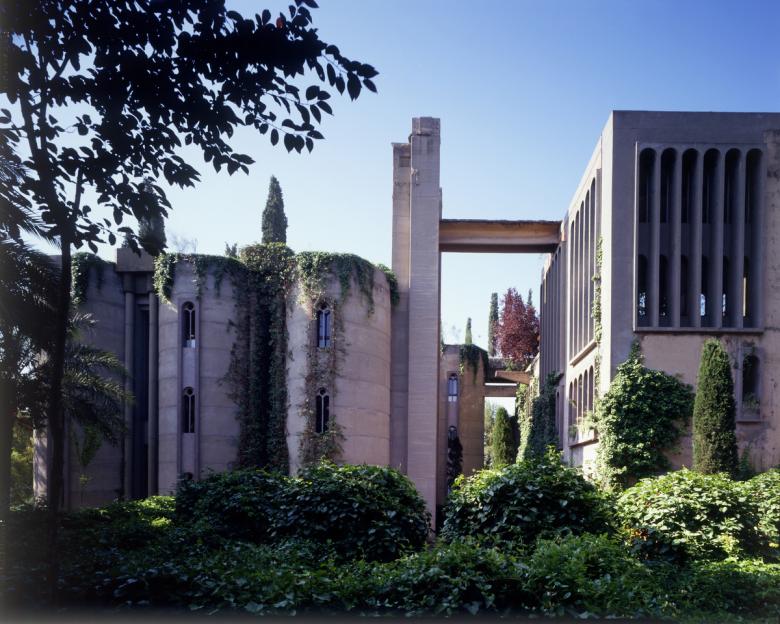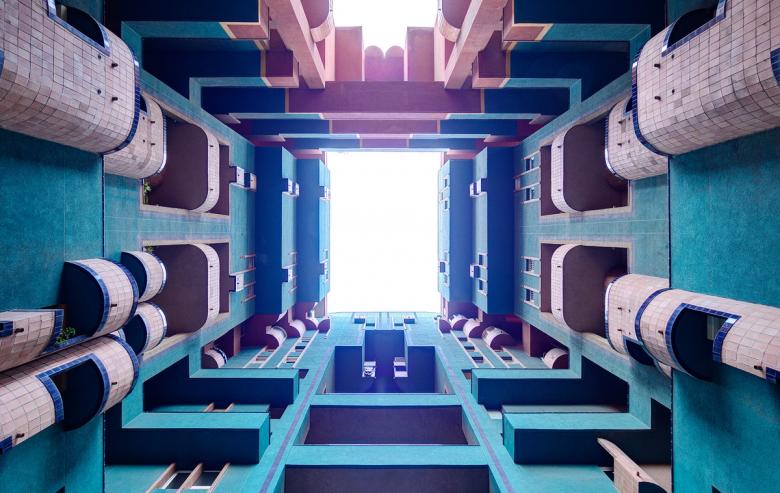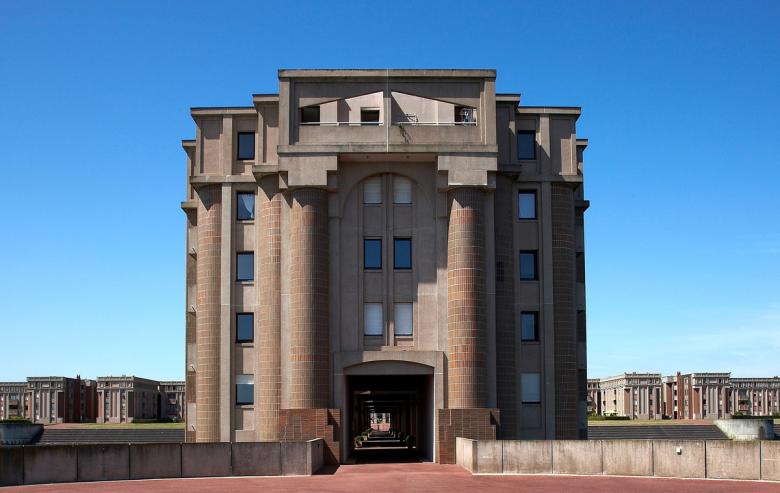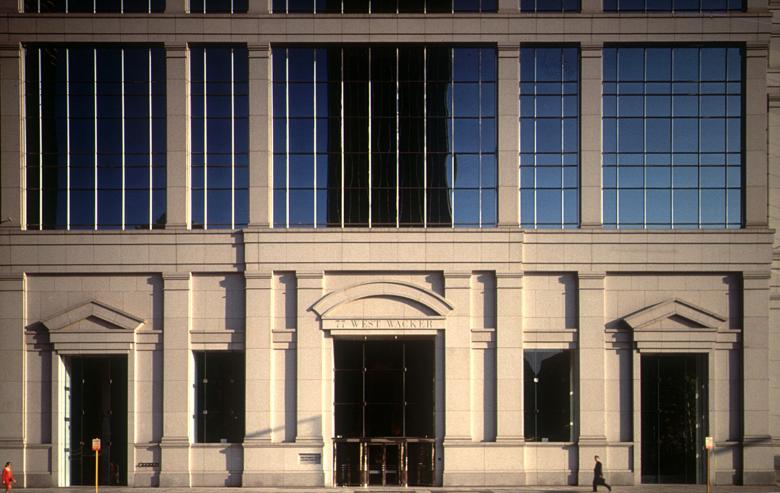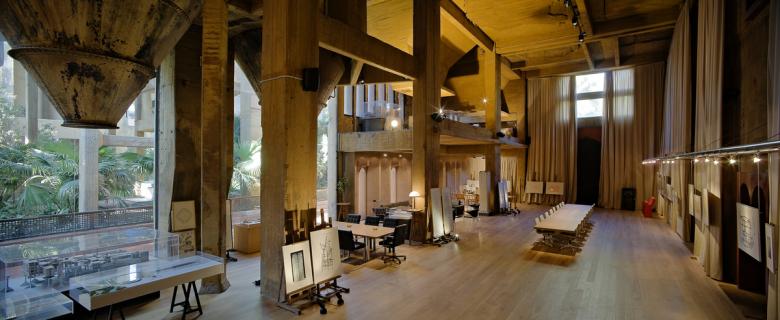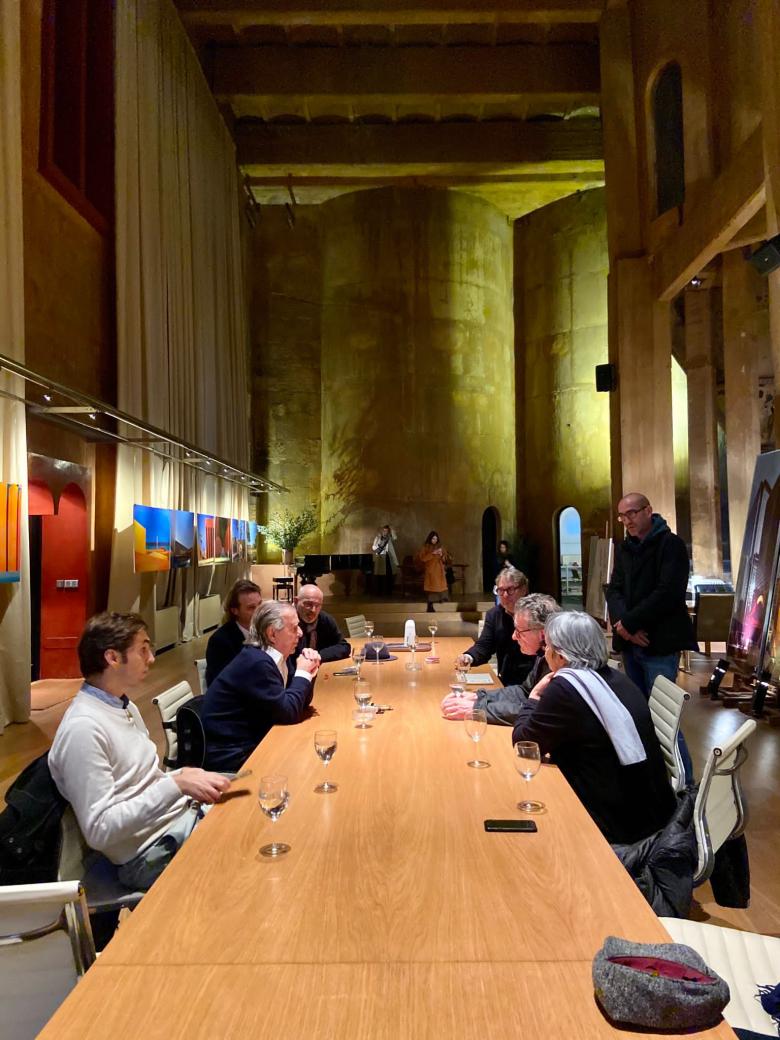Ricardo Bofill, 1939–2022
Spanish architect Ricardo Bofill Levi, the founder of the eponymous Ricardo Bofill Taller de Arquitectura in Barcelona and the prolific designer of hundreds of buildings in dozens of countries, died on January 14, 2022, at the age of 82.
Bofill's death was announced, simply, on the Taller de Arquitectura's Instagram account, with a photo of a young Bofill relaxing in a desert setting accompanied by his date of birth, December 5, 1939, and death, January 14, 2022. An obituary at El Pais indicates that Bofill died in a hospital in Barcelona after contracting Covid.
Born in Barcelona, Bofill studied architecture at the School of Architecture in Geneva, Switzerland, after he was expelled from Escola Tècnica Superior d'Arquitectura de Barcelona (ETSAB) for being anti-Francoist. In 1963 he founded a group that became Taller de Arquitectura (Architectural Workshop), with architects and engineers working alongside artists and professionals from other fields, such as literary critic Salvador Clotas, poet José Agustín Goytisolo, and economist Julia Romea.
Ten years later, in 1973, Bofill discovered a disused cement factory in Sant Just Desvern, on the outskirts of Barcelona, and started transforming it into the head office of Taller de Arquitectura and his residence. Consisting of more than thirty silos, subterranean galleries, and huge machine rooms, the partially ruined factory would require two years of remodeling work, though transformations of the industrial relic continued for decades. Nearly sixty years after work started on the project, the home of Taller de Arquitectura is considered "a built manifesto and [...] one of his best works."
Around the same time Bofill turned a place for cement production into his home and studio, he built the Walden 7 housing project on a site bordering the Taller de Arquitectura. Walden 7 is a monumental expression of the plasticity of concrete, with eighteen towers forming a vertical labyrinth with seven interconnecting interior courtyards — "as far removed as possible from the model of the uniform, repetitive housing block" in the studio's words. Other residential projects in Spain in the late 1960s and early 1970s, including Kafka's Castle (1968) and The Red Wall (1973), have similar plasticity, labyrinthine qualities, and colorfulness enabled by in situ concrete.
A dramatic aesthetic shift in the work of Bofill and his Taller de Arquitectura followed the housing projects in Spain, after he opened an office in Paris and worked on a number of large projects in France following from the country's Villes Nouvelles (New Towns) policy. Notable among them are Les Arcades du Lac (1982), Les Temples du Lac (1986), and Belvedere Saint Christophe (1986). Gone were the plastic forms and bright paints of the projects in Spain; in their place were archways, pediments, pilasters, and other classically derived elements made from precast concrete. Furthermore, the postmodern elevations fronted grand squares and other spaces that were the antithesis of the intimate courtyards of his work in Spain.
The rise of postmodern architecture in the 1980s made Bofill a popular choice for developers outside of France and Spain. In Chicago, the birthplace of the skyscraper, the Taller de Arquitectura designed a 50-story office tower at 77 West Wacker Drive (1992), a prominent site overlooking the main branch of the Chicago River. The gridded facades of glass and stone have proportions meant to recall Giotto’s campanile at the Duomo in Florence, while the most overt classicism is found at the base and the top, the latter described as "a classically-proportioned temple."
Projects this century have seen Taller de Arquitectura working at home (Terminal 1 at Barcelona Airport, W Barcelona Hotel, Desigual) and abroad, with projects in the Czech Republic, Morocco, and elsewhere. For the last few years Bofill's sons, Ricardo Emilio and Pablo, have been in charge of the studio, which consists of more than one hundred professionals from thirty different nationalities. They will continue to lead the studio their father founded in 1963.
Taller de Arquitectura has announced that a public memorial will be held on January 26 and 27, when friends, relatives, and admirers of Ricardo Bofill's architecture will be able to visit the studio's headquarters and pay tribute to the architect.

